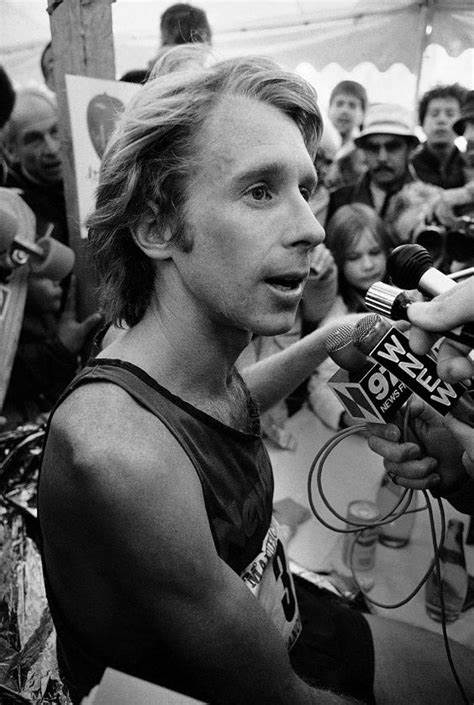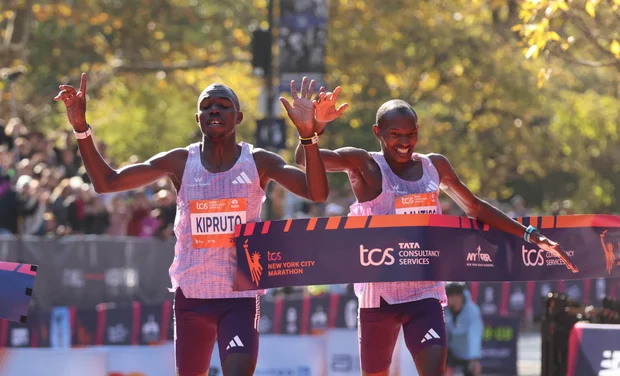In 1937, MGM released A Day at the Races, the seventh movie starring The Marx Brothers.
Like most of the previous six, the film attracted favourable reviews and made good box office. One of those reviews was penned by none other than Graham Greene, the English author and journalist regarded as one of the leading novelists of the 20th Century.
Rock band Queen – somewhere closer to movies on the entertainment spectrum than Greene’s writings – released a 1976 album A Day at the Races, continuing a theme after 1975’s A Night at the Opera, which also name-checked a Marx Brothers movie.
And now, the New York Marathon has paid homage to Groucho, Harpo, Chico and sometimes Zeppo, too: how would you better describe the women’s and men’s contests last weekend than 2025’s version of A Day at the Races? At the risk of labouring a theme to death, the voters of New York City followed suit two days later by voting in a Marxist lord mayor (well, Donald Trump, admittedly an unreliable source, proclaimed Zohran Mamdani ‘a communist’ both before and after the election).
New York has been trending racing rather than pacing for several years now. The course which twists and turns its way through the city’s five boroughs contains too many bridge crossings and turns, even before the undulating final kilometres around and through Central Park, to be classed as ‘fast’. Record-eligible it may be. Record-conducive? That’s another matter entirely.
Frank Shorter – the runner’s runner – and Bill Rodgers – the common person’s runner, were arguably the two best marathoners in the world in 1976. They raced in New York that year. It was the height of the first running boom and US road racing was poised to lead athletics into a professional era. Within a couple of years, the New York Marathon was the most famous race in the world. In Australia, the Melbourne marathon followed suit in 1978; London joined the big-city boom in 1981.

The appeal of races like Berlin and Chicago is that you can run fast, world-record fast. But if you don’t, what have you got? More than everyone’s ration of five minutes’ fame, perhaps; but not much more. Win in New York, however, and you’re made. You can always chase a PB somewhere else, probably for an enhanced appearance fee.
Last weekend, New York hit the jackpot. Big names? Tick. Paris 2024 Olympic champion Sifan Hassan was joined by a trio of Kenyan New York winners in Hellen Obiri, Sharon Lokedi and Sheila Chepkirui. World record holder and dual Olympic champion Eliud Kipchoge was the biggest name in the strong men’s field.
In contrasting fashion, both the women’s and men’s races built to compelling conclusions. The four leading women’s contenders were more intent on tracking each other as Americans Susanna Sullivan (runaway leader and ultimate fourth in the world championships) and Fiona O’Keefe drove a solid pace (just over 71 minutes for the first half).
The next 10 or so kilometres played out as expected, the three Kenyans teaming up to winnow the pack down. First Sullivan went off, then Hassan, then O’Keefe – though both the latter pair clawed their way back up more than once. Chepkirui hung tough until approaching 40km but then she was gone, too.
Lokedi had stayed with Obiri in Boston this year before finishing the stronger. Obiri, who never looks comfortable until she makes opponents look even more uncomfortable, surged decisively just beyond 40km. Arms pumping, legs bustling, she looked like she was running fast, and she was. She finished in 2:19:51, breaking the one record that is reachable in New York – the course record – by 2:40.
Lokedi and Chepkirui were also under Margaret Okayo’s previous record set back in 2003. Hassan, who had won in Sydney just nine weeks earlier, was sixth woman across the line.
If the pace of the women’s race was always solid, the men’s was more sedate. The women were always on course for the race record, but the 65:18 first half, which saw a pack of 22 in contention, already put Tamirat Tola’s 2:04:58 beyond reach. Negative splits are common in marathons, but nobody’s running a sub-60 in New York – for either half of the race!

CHARLY TRIBALLEAU/AFP via Getty Images
Kipchoge, whose aim was to participate as much as win, was still in the pack at that stage. An injection of pace by Hillary Bor around 25km produced the first reduction in the pack, now down to eight. With five kilometres to run, it was down to four – Olympic bronze medallist and three-time marathon major winner Benson Kipruto, Alexander Mutiso, Alfred Korir and Britain’s Patrick Dever.
Approaching 40km it was just Kipruto and Mutiso. Following Obiri’s playbook, Kipruto took control into the final kilometre and seemed to have built a slim, but decisive lead. It still looked that way as they re-entered Central Park for the last 600m, even into the last 200. From somewhere Mutiso found another gear. Somehow Kipruto appeared not to notice, despite having a couple of looks back.
Comfort turned to discomfort as both men dived for the line arms raised. It was close, but Kipruto’s 2:08:09 just bettered Mutiso’s 2:08:09 by three-hundredths of a second. Amazingly, this was the same margin by which Alphonce Felix Simbu beat Amanal Petros at the world championships, both men running 2:09:48. Further back, Kipchoge was seventeenth in 2:14:36.

CHARLY TRIBALLEAU/AFP via Getty Images
The 16 seconds margin Obiri had over Lokedi used to be regarded as a close marathon finish. Now here’s two major men’s races in seven weeks decided by three hundredths of a second.
What a day at the races New York 2025 put on.
